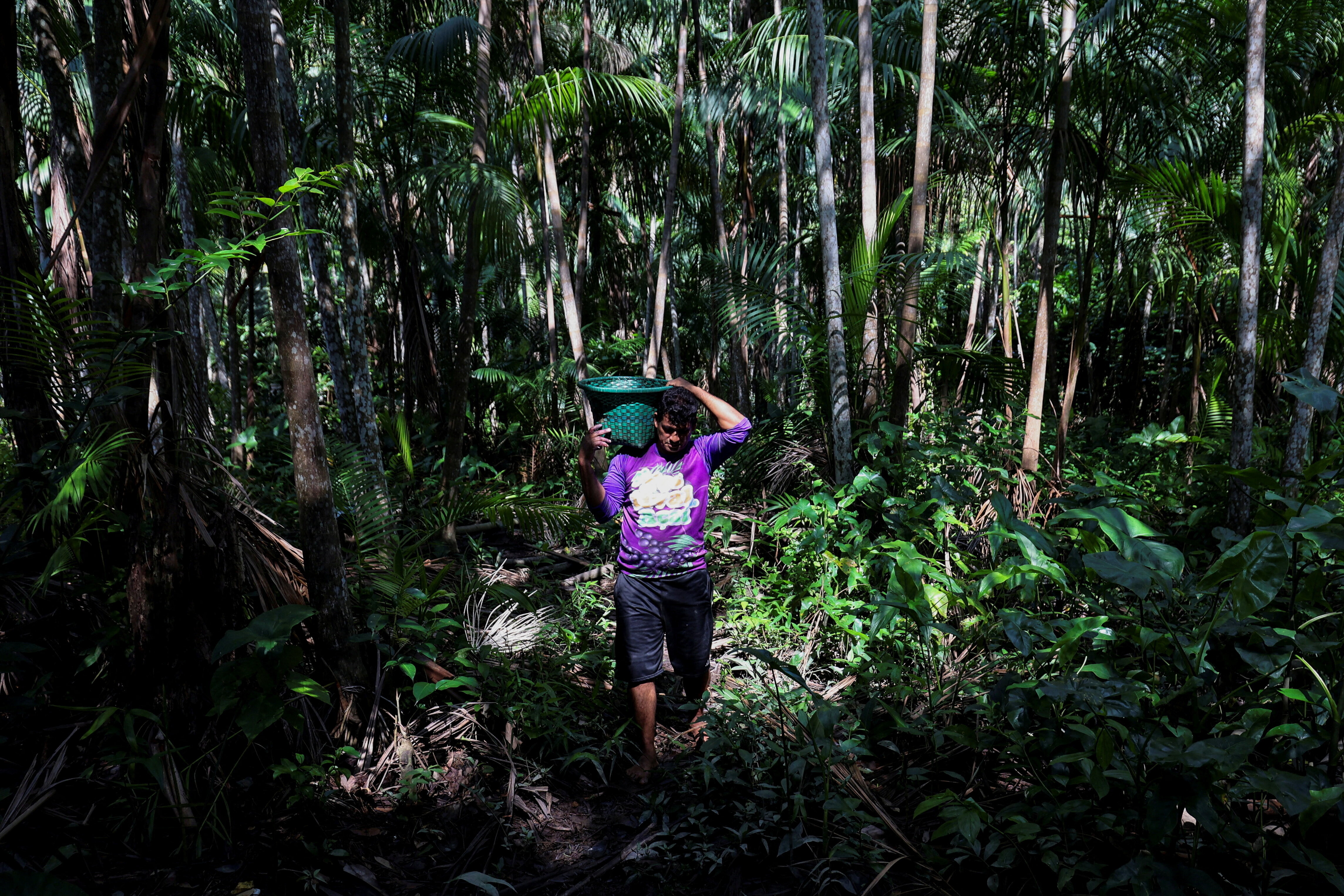Alternative proteins will transform food, mitigate climate change and drive profits. Here's how

The protein transformation. Image: Mosa
- Plant-based, microorganism- and animal cell-based alternatives to animal meat, fish, eggs, and dairy are projected to make up at least 11% of global protein consumption in 2035 – with a push from regulators and step changes in technology, they could reach fully 22% of the total.
- By 2035, the shift to plant-based meat and eggs alone would save as much carbon emissions as Japan emits in a year, enough water to supply the city of London for 40 years, and promote biodiversity and food security.
- A new report from Blue Horizon (BHC) and Boston Consulting Group (BCG) says the $290 billion alternative protein market is the foundation of a more sustainable food system.
The world’s consumers love animal-based protein—so much so that in 2020 they ate 574 million metric tons’ worth of meat, fish, dairy, and eggs—almost 75 kilograms per person. And the amount consumed is growing, especially in developing economies. Yet concerns about the environmental costs of raising all the animals we eat, how those animals are treated, and the consequences for human health of eating all that meat, fish, dairy, and eggs are growing even faster.
That’s why alternative proteins have morphed in just the past few years from a niche product to a mainstream phenomenon. Plant-based meats are now a fixture at fast-food restaurants around the world, and plant-based milk is a household staple. Microorganism-based alternatives have been available for decades, and you can taste meat grown from animal cells in restaurants in Singapore and Israel.
Indeed, nine out of ten of the world’s most popular dishes will soon be feasible with reasonably priced alternative proteins, especially those using less-structured meat, such as ground beef.
We expect the alternative-protein market will increase to more than seven times its current size over the next decade and a half, from a current 13 million metric tons a year to 97 million metric tons by 2035, when it will make up 11% of the overall protein market. Assuming average revenues of $3 per kilogramme, this amounts to a market of approximately $290 billion.

These figures assume a consistent pattern of consumer acceptance, regulatory support, and technological change. How would changes in these assumptions affect the market’s growth? Significantly, and mostly on the upside, according to the alternative scenarios we developed.

- Upside #1. Further efforts on the part of scientists, startups, incumbents, and investors lead to technological step changes that improve product quality and accelerate the time to parity. Alternative proteins grow more quickly, to 16% of the market in 2035.
- Upside #2. More supportive policies and regulations, such as widespread taxation of greenhouse gas emissions or reallocation of agricultural subsidies to support the transition to alternative proteins, make alternative proteins substantially less expensive than conventional animal foods, pushing penetration to 22% of the market in 2035.
- Downside. Consumers who currently say they are ambivalent about protein substitutes become more hesitant to try them, slowing market growth to 10% of the 2035 total.
Already at 11% of all protein, the protein transformation offers substantial benefits. With the shift to plant-based meat and eggs alone, the world could already save one billion tons of carbon emissions from now until 2035 – equivalent to Japan going carbon neutral tomorrow, for an entire year.
On top come 39 billion cubic meters of water, which could supply the city of London for 40 years, and an area the size of the United Kingdom that would not be needed for agriculture. The number of animals undergoing ethically questionable treatment in factory farms can be reduced – for instance, 50 billion less chickens would be eaten from 2020 to 2035.
Biodiversity, the climate and human health would receive a much-needed boost, in line with six of the UN Sustainable Development Goals. For the individual consumer, this means you can save as much carbon emissions as a new car emits on a 10km ride, just by making one portion of spaghetti Bolognese with the plant-based mince you can already buy today in most parts of the world.
What is the World Economic Forum doing to help ensure global food security?
Whether or not any of these alternative scenarios comes to pass, substantial capital must be invested across the protein value chain to support the protein transformation. The extrusion capacity needed for plant-based proteins, for example, will require up to $11 billion to reach the baseline case of 11% adoption by 2035, and as much as $28 billion if the greatest upside scenario comes to pass.
Almost 30 million tons of bioreactor capacity for microorganisms and animal cells will also be needed in the base case, requiring up to $30 billion in investment capital—and far more, in either of the upside scenarios. These are just two of the technologies required to unlock the market’s growth; the total capital needed will likely be much higher.
Most investment capital is currently focused on companies that are integrated along the value chain, enabling them to ensure quality control as they explore new technologies. As the industry matures, however, two types of investment plays will emerge.
The first is a technology play: a company that solves a particular technological challenge will likely become the go-to firm for its specific step along the value chain, such as flavouring, and other companies will eagerly license its intellectual property to augment their own processes. The second is a platform play: well-funded companies or investors will build industrialized platforms for capital-intensive technologies such as extrusion.
A tasty sustainable food system
The benefits of alternative proteins are clear—tasty, nutritious and healthy food, lower carbon emissions, and fewer concerns about the ethics and environmental consequences of intensive animal farming.
Farmers and scientists are at the heart of the transformation, providing the technological means and the quality inputs needed. Incumbent producers and startups will refine and scale up production to make alternatives tastier and less expensive, securing market shares in the race to parity.
Consumers will demand more enjoyable alternative proteins. Investors with the right vision and expertise can fund the transformation and participate in every step of the value chain. Together, they can benefit from a $290 billion market as they build a more sustainable food system that tastes good, too.
See the joint Blue Horizon and BCG report “Food for Thought: The Protein Transformation” for more insights.
Don't miss any update on this topic
Create a free account and access your personalized content collection with our latest publications and analyses.
License and Republishing
World Economic Forum articles may be republished in accordance with the Creative Commons Attribution-NonCommercial-NoDerivatives 4.0 International Public License, and in accordance with our Terms of Use.
The views expressed in this article are those of the author alone and not the World Economic Forum.
Stay up to date:
Food Security
Forum Stories newsletter
Bringing you weekly curated insights and analysis on the global issues that matter.







